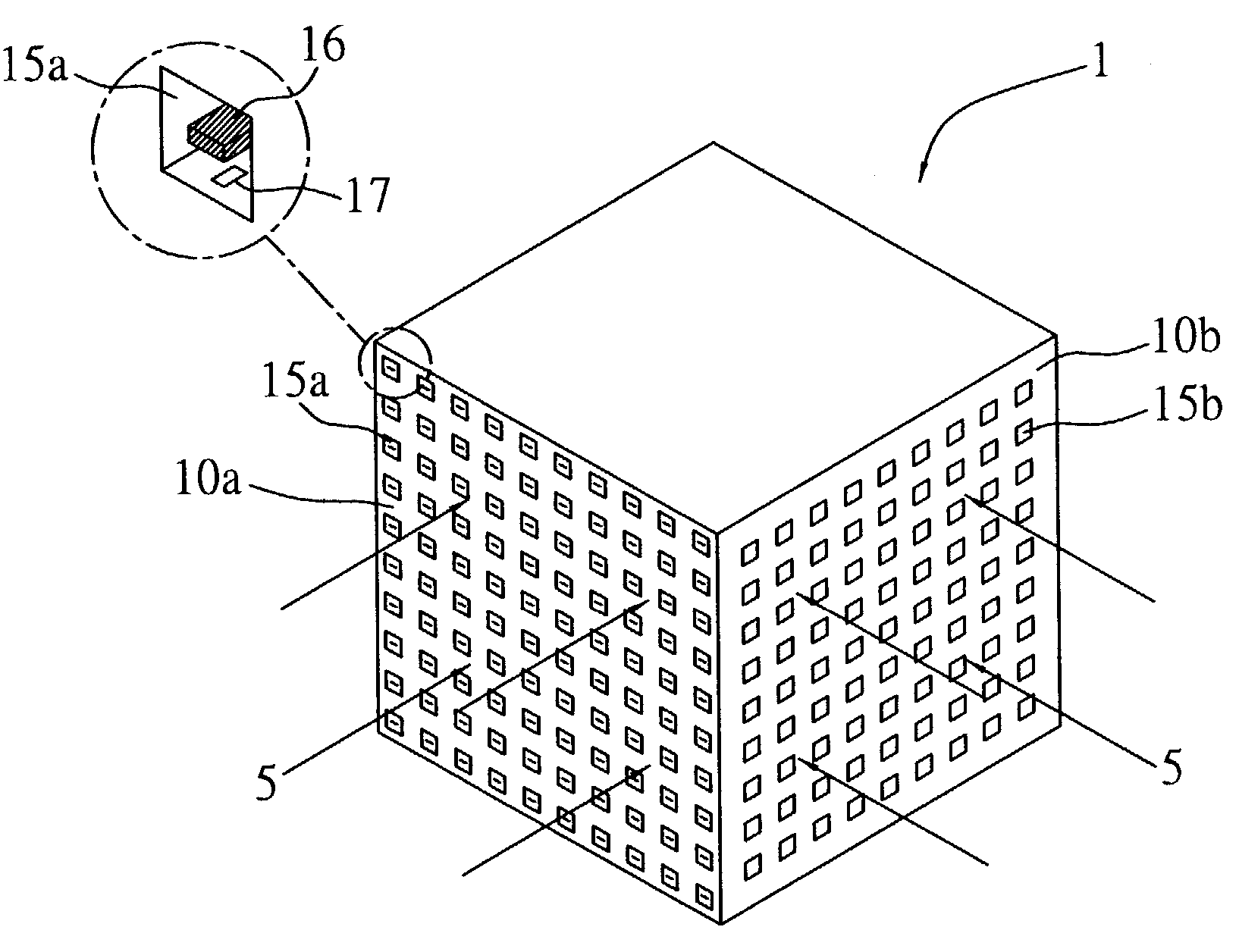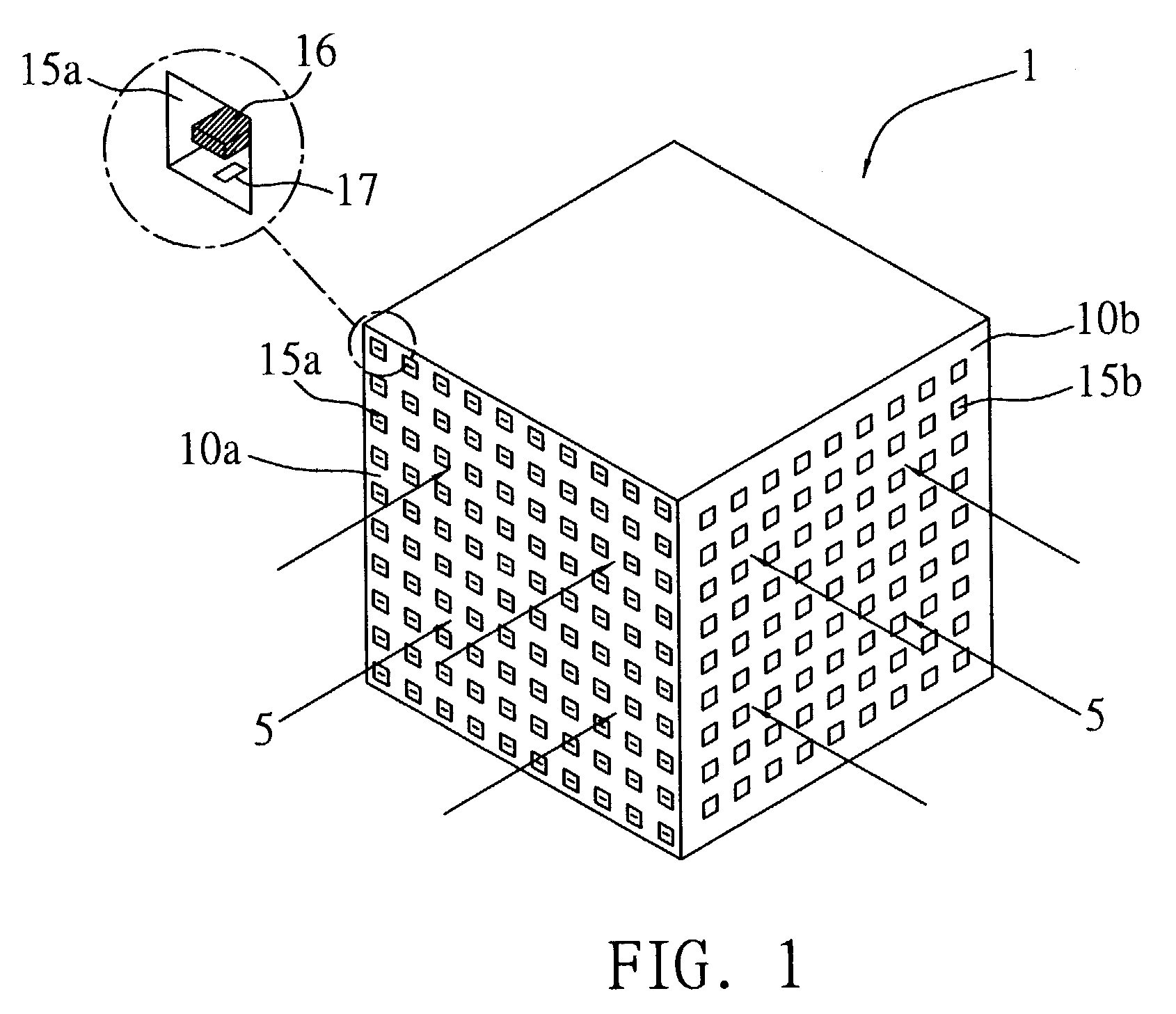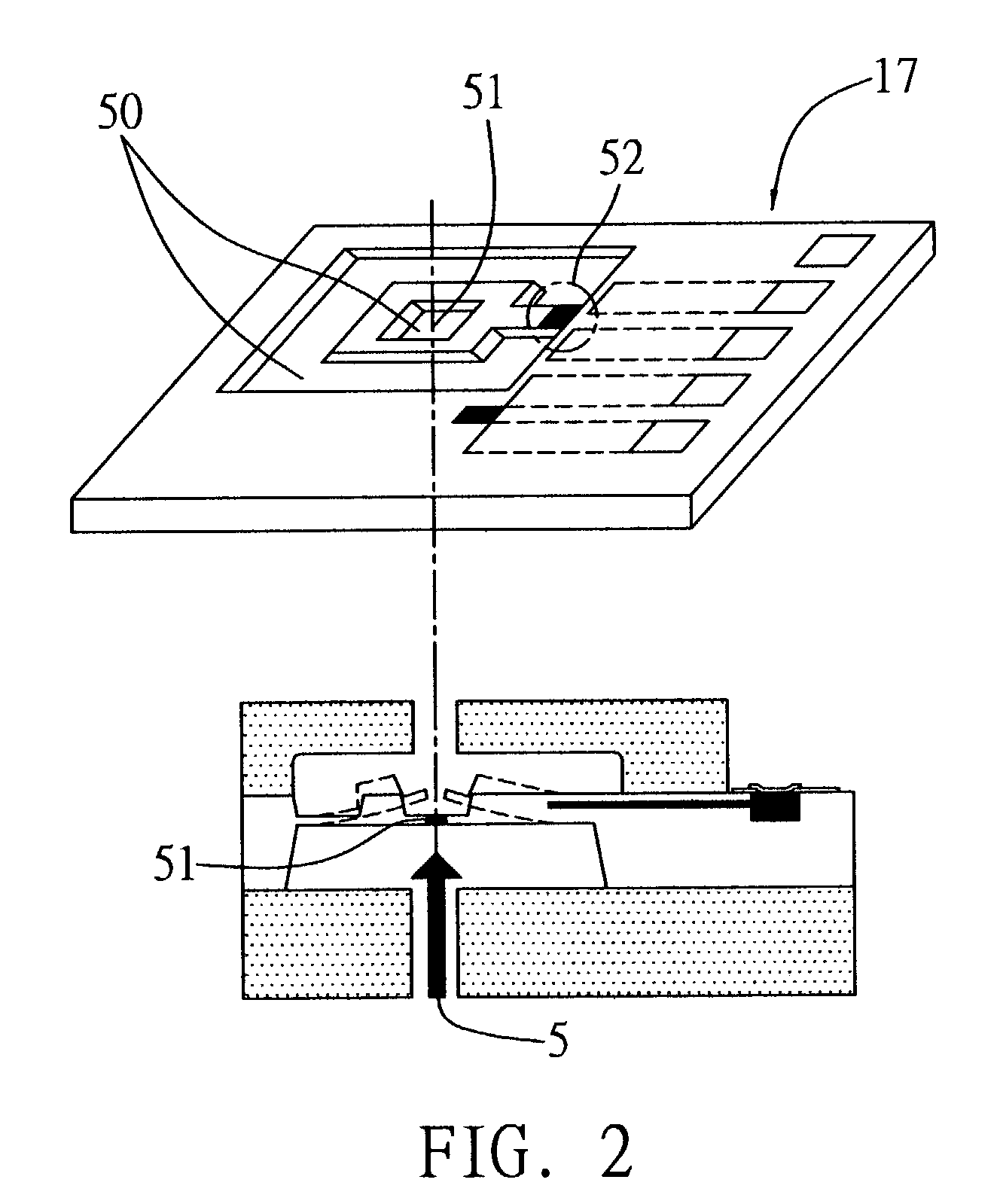Enhanced heat transfer device with electrodes
- Summary
- Abstract
- Description
- Claims
- Application Information
AI Technical Summary
Benefits of technology
Problems solved by technology
Method used
Image
Examples
Embodiment Construction
[0019]The present invention applies electrohydrodynamic (EHD) theory to a heat dissipating system in which electrodes are mounted in fluid channels where fluids pass, and connected to an external power source that generates a high-voltage and low-current electric field to produce turbulence to boundary layers of fluids in the fluid channels and allow uniform fluid flows in the fluid channels so as to improve heat transfer performance. FIG. 1 illustrates an enhanced heat transfer device with electrodes according to a preferred embodiment of the invention, which is applied to a micro heat exchanger 1 made of stainless steel. A first conductive surface 10a of the micro heat exchanger 1 is formed with one hundred of micro channels 15a arranged in a 10×10 array and penetrating through the micro heat exchanger 1, allowing cooling fluids 5 to pass through the micro channels 15a for heat exchange, wherein each micro channel 15a has a diameter of about 100 μm. Similarly, a second conductive ...
PUM
 Login to View More
Login to View More Abstract
Description
Claims
Application Information
 Login to View More
Login to View More - R&D
- Intellectual Property
- Life Sciences
- Materials
- Tech Scout
- Unparalleled Data Quality
- Higher Quality Content
- 60% Fewer Hallucinations
Browse by: Latest US Patents, China's latest patents, Technical Efficacy Thesaurus, Application Domain, Technology Topic, Popular Technical Reports.
© 2025 PatSnap. All rights reserved.Legal|Privacy policy|Modern Slavery Act Transparency Statement|Sitemap|About US| Contact US: help@patsnap.com



